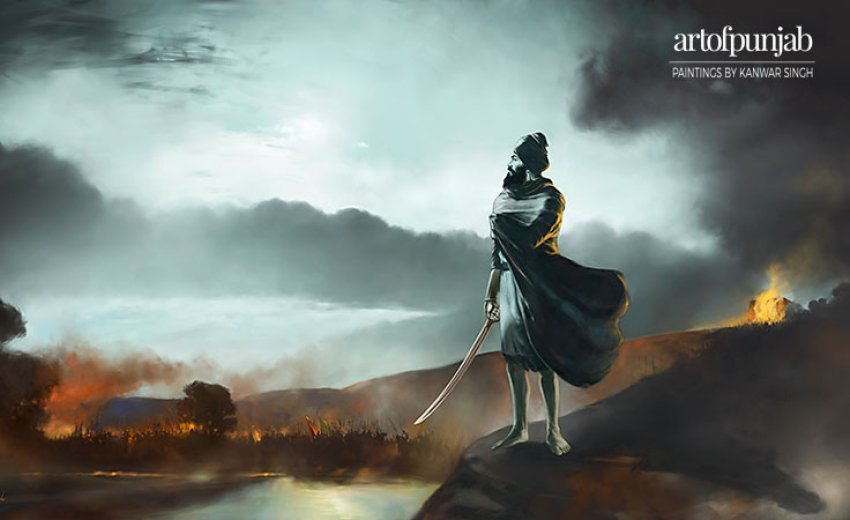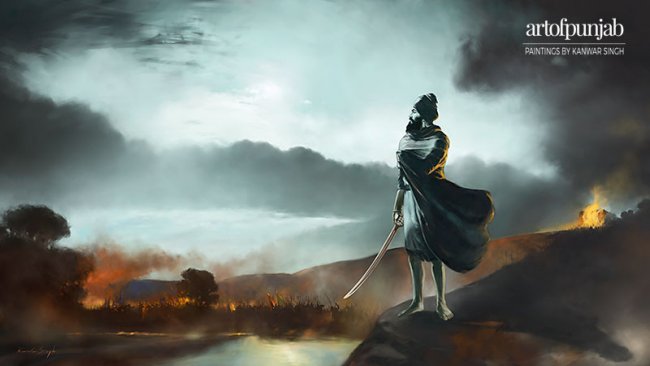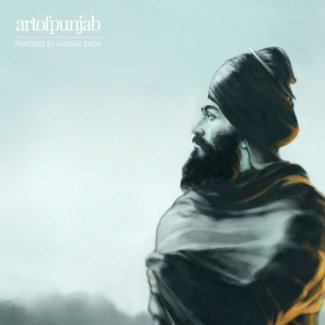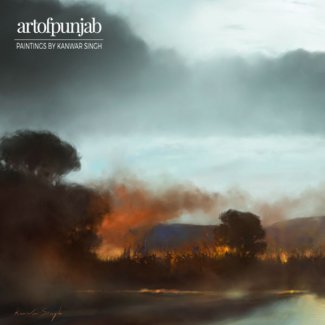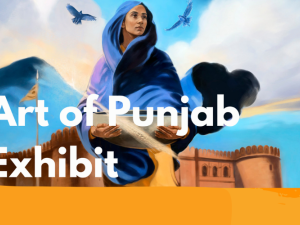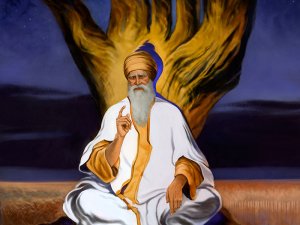December marks the month of Poh in which we remember a very significant time in the life of the tenth master Guru Gobind Singh ji and the Khalsa Sikhs who forsook everything to serve alongside him in his divine mission.
Like all Sikhs, I am in awe of the moral character of Guru Gobind Singh ji, and though his entire life exemplified spiritual excellence, the storied events of that December month three centuries past, is a fountain of inspiration for myself as a painter of Sikh history.
Over the past few years, I have committed myself to creating one painting each year which depicts a pivotal event in the month of Poh and my hope is to create an extensive series of artworks which delve deeply into the spiritual and emotional connection we all share of that defining period in history. In my creative exploration I have found that each scene is individually so potent with emotion and meaning that every painting must stand alone in style, colour and form so that it can convey its' own singular message.
This latest art piece titled, ‘Guru Gobind Singh ji - The Siege of Chamkaur’ is painted in an arrangement of silvery grey and blue hues which convey a very particular mix of emotion and energy. Guru Gobind Singh ji has left the fort to honour the Hukam (command) of the Gurmuks and stands tall before the enemy declaring loudly to all who oppose him," Peer-e-Hind rwad!" (the Peer of India is leaving). The predominantly cool palette contrasted against far off bursts of fiery colour conveys the somber nature of this moral victory set against the tremendous loss of his heroic companions, including two of his sons who all attained Shaheedi that day. Guru Sahib stands regal and unconquerable before his enemies, always in chardi kala (eternal optimism), transfixed by the grander reality of Waheguru's will which exists beyond that singular moment in time. - Artist, Kanwar Singh
To see the full painting and other artworks in the series commemorating the month of Poh visit artofpunjab.com.
During the Battle of Chamkaur, a small number of Sikhs were left in the Fort of Chamkaur with Siri Guru Gobind Singh Ji, Fighting paused at nightfall while the Mughals regrouped, which gave valuable time to these few remaining Sikhs to plan their strategy.
Those left included Bhai Daya Singh Ji, Bhai Dharam Singh Ji (the two remaining Panj Pyare), Bhai Mann Singh Ji, Bhai Sangat Singh Ji and Bhai Sant Singh Ji. These remaining Sikhs issued Guru Sahib with a Hukam (command) to leave the fort. Guru Sahib had no choice but to obey their command. It was decided that Guru Sahib, Bhai Mann Singh Ji, Bhai Daya Singh Ji and Bhai Dharam Singh Ji would all leave the fort.
Bhai Sangat Singh Ji bore a striking resemblance to Guru Sahib, so, before departing, Guru Sahib dressed Bhai Sangat Singh Ji in his own image. Guru Sahib did not leave quietly. Instead he stood on high ground and clapped his hands three times, saying, ‘Peer-e-Hind-rwad’ (The ‘Peer’ of India is leaving’). The Mighals, who, in the darkness, were unable to see where or who anyone was, ended up killing several of their own, while Siri Guru Gobind Singh Ji and the three Sikhs who accompanied him left. They had previously agreed that, were they to split up, they should meet on the outskirts of Macchivara, twenty-seven kilometres away.
As day broke, the Mughals launched an all-out attack on the mud fort. Despite determined resistance, the Mughal troops finally entered the fort, after hours of bombardment. At the same time, Bhai Sangat Singh Ji, Bhai Sant Singh Ji and the remaining Sikhs charged out on horseback. They engaged the Mughals, killing scores of them before attaining martyrdom. The Mughals thought they had killed Guru Sahib, but he had already left Chamkaur.
Meanwhile, Guru Sahib headed on foot to the forest of Macchivara.
The Battle of Chamkaur took place in 1704. Guru Gobind Singh ji, his two elder sons, Baba Ajit Singh and Baba Jujhar Singh alongside a small band of loyal Sikhs, defended the small fort of Chamkaur against a large Mughal force pursuing them. After a long day of Battle, in which many Sikhs including the elder Sahibzadey were martyred, the remaining Sikhs issued Guru Sahib with a Hukam (command) to leave the fort. Guru Sahib did not leave quietly. Instead he stood on high ground and clapped his hands three times, saying, ‘Peer-e-Hind-rwad’ (The ‘Peer’ of India is leaving’).
Leaving Chamkaur with valour - Text by Koi, from the Sikh art book 'Journey of the Mind'

